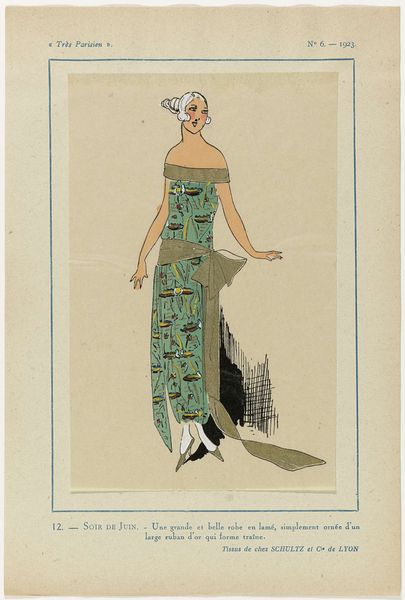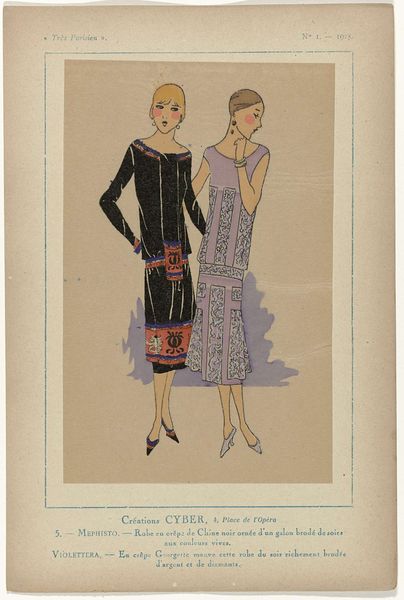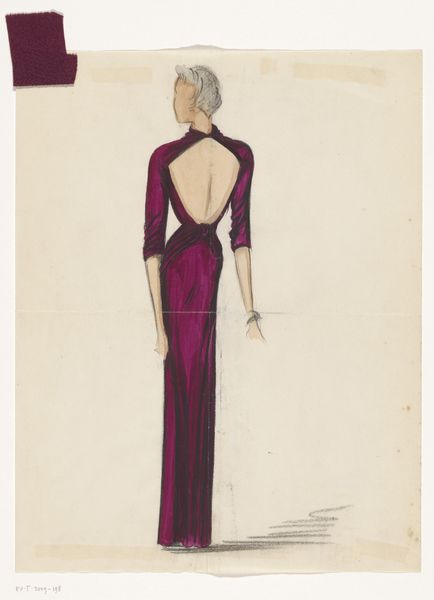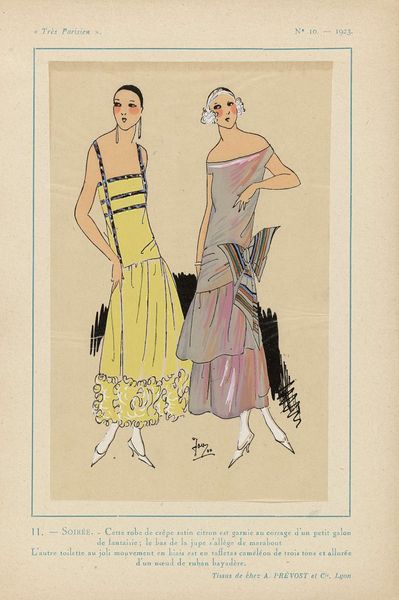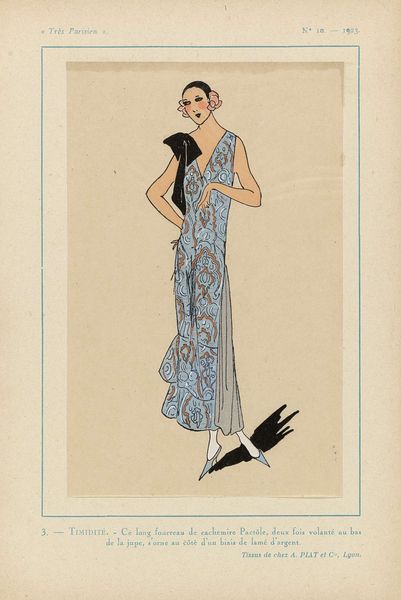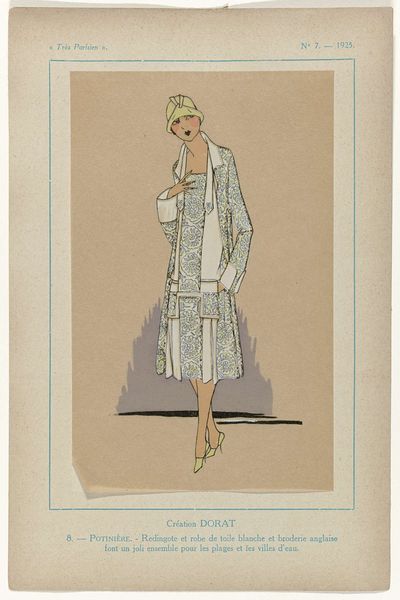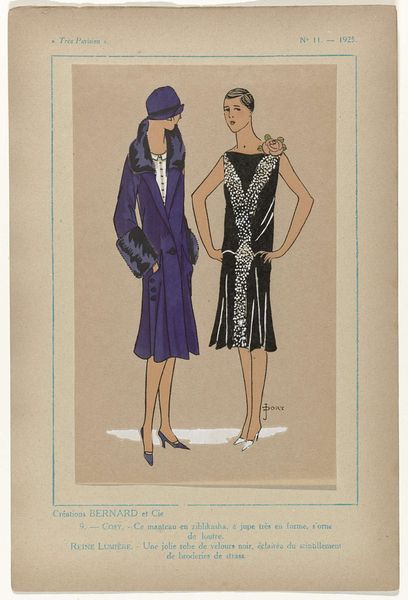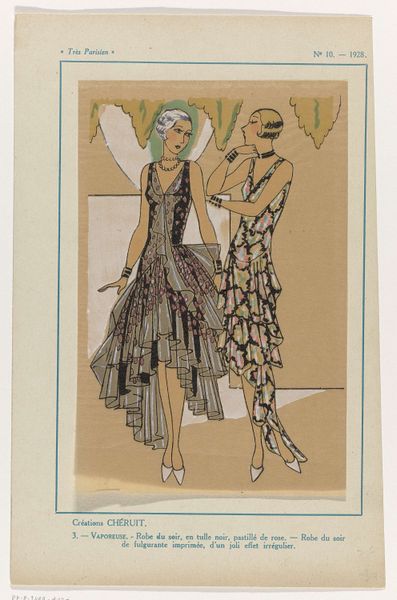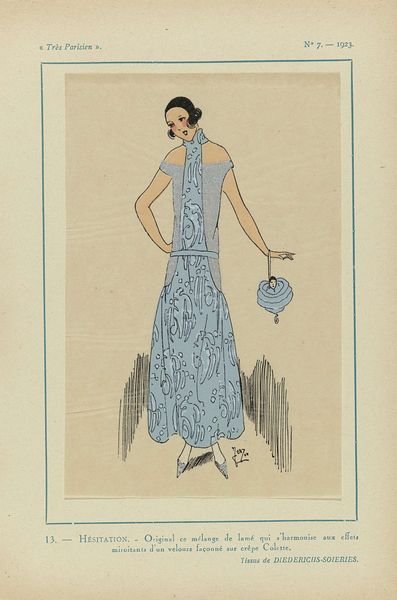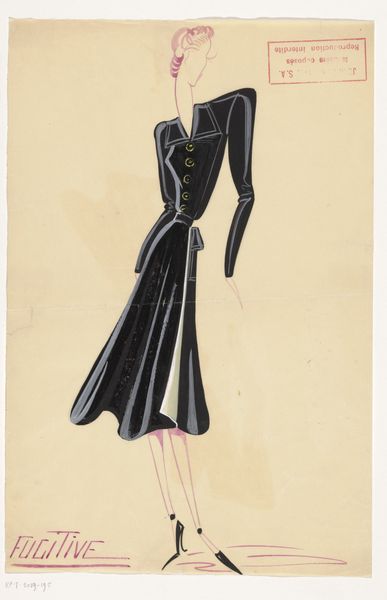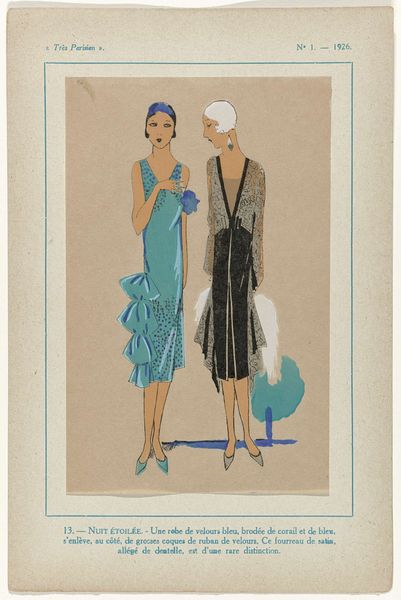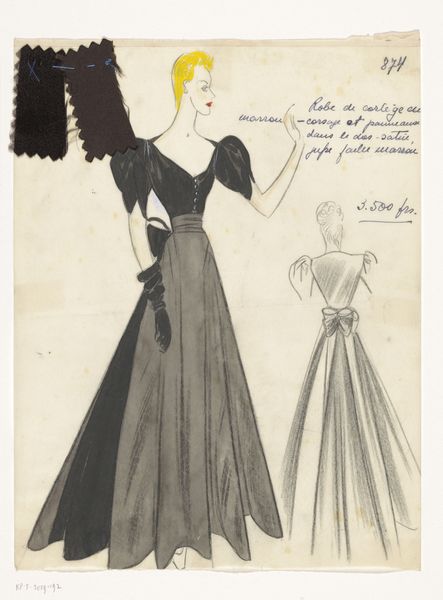
drawing
#
portrait
#
drawing
#
figuration
#
historical fashion
#
character design for animation
Dimensions: height 274 mm, width 155 mm
Copyright: Rijks Museum: Open Domain
Curator: What strikes me first about this artwork, "Woman in a Black Dress, 1936, No. 11" by Monogrammist ML, is how resolutely it holds its own ground. Editor: Right, a grounding image. I see restraint initially. All of that stark black swallows everything but this central, delicately filigreed neckline, those open, petal-like sleeves, and the little green accent. Almost heraldic. Curator: Yes! Heraldic is perfect! It’s like a black swan, confident yet elusive. It feels very personal somehow, almost like an ode to quiet strength and understated style. The little hat and feather give it that dash of unexpected whimsy that just elevates the entire look. Don’t you feel that? Editor: Indeed, but the darkness and lace evoke deeper associations. The “swan” figure carries connotations of transformation in myth, rebirth... even feminine wiles! But the sleeves. What statements these make with all that detail. Curator: Sleeves speak volumes, truly. These make me want to twirl! They also speak to the design itself. The cut! The precision of line... And this isn't merely representation. The little sketched figure behind... is it a plan? I imagine the Monogrammist had something specific in mind, someone unique in mind as inspiration... Perhaps an idea more than an attempt to design for every woman, or for the trends... Editor: Potentially so. One thinks about social signaling through dress... class signifiers but on a deeper, archetypal level, these black dresses appear as reminders of mortality and spiritual presence throughout visual culture—it also reminds me of mourning dresses. However, that bit of green, those graphic stripes on the surface of the design, pull it from complete submersion, adding modernity, freshness. It creates a complex image for me: the dress’ darkness acts almost as a void containing potential new worlds, made intimate. Curator: That makes complete sense to me—this feels so aligned with interwar sensibility and an emergent desire to seek beyond immediate historical pain. "Fashion as escape"—perhaps "fashion as progress" toward hope. To your point on green... It becomes this tender shoot of possibility, springing from a rich, dark soil of shared, generational emotion. It almost makes the picture thrum to be quite frank. Editor: "Fashion as progress," I admire this characterization greatly; it offers me much to think about. The composition is one of simplicity. Thank you, as well, for shifting my perspectives here and unveiling these possibilities with me today.
Comments
No comments
Be the first to comment and join the conversation on the ultimate creative platform.
